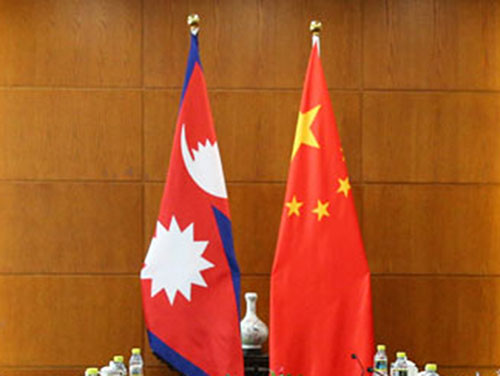Signing of protocol with China to help diversify country’s trade
Kathmandu, May 7
After signing a protocol with China last week to operationalise the Transit and Transport Agreement of 2016, Nepal will now not only have access to third-country trade via Chinese ports (dry and sea ports), but Nepali vehicles will also be allowed to ferry cargo up to Shigatse, as per the Ministry of Industry, Commerce and Supplies (MoICS).
“Agreement on the protocol of the Transit and Transport Agreement with China means that Nepal now has access to different Chinese ports for third-country trade. As an agreement has also been signed that allows Nepali vehicles to ferry cargo to different ports in Shigatse, this will further ease Nepal’s third-country trade via China,” said Kedar Bahadur Adhikari, secretary at MoICS.
However, Nepali vehicles need to take necessary permission from related Chinese authorities to avail this facility.
Furthermore, Adhikari informed that the agreement on protocol of transit and transport has also allowed the movement of cargo from Chinese ports up to Nepal’s border point via any suitable route.
“The road routes for movement of goods are generally specified while signing trade and transport pacts, but this is not the case with Nepal’s agreement with China. This provision will also facilitate Nepal’s trade via China,” he said.
Signing of the protocol for implementing the Transit and Transport Agreement with China took place during President Bidhya Devi Bhandari’s state visit to the northern neighbour last week.
This agreement has been taken as a milestone in diversifying Nepal’s third-country trade. Until now, Nepal had only been able to use Indian ports for its third-country trade.
As per Adhikari, the agreement allows Nepal to use any open seaport for third-country trade in the long run. For now, Nepali traders can use seaports at Tianjin, Shenzhen, Lianyungang and Zhanjiang and land ports in Lanzhou, Lhasa and Shigatse.
However, the government is yet to analyse the comparative benefits for Nepal to use Chinese ports for third-country trade.
Meanwhile, Adhikari said that a government team will soon visit each of the aforementioned ports that Nepal has acquired access to and analyse the transport cost and time to ferry goods, along with other procedural and documentation requirements.
Nabaraj Dhakal, joint secretary at MoICS, said that the country needs to increase its production base and focus on exports to be able to fully utilise Chinese ports.






